March 15, 2014
BURLINGTON, ON.
John Willard has certainly put a much different twist on what we thought quilts were all about. Canadians used to see quilts as things that people on farms used – often made out of bits and pieces of discarded clothing and flour sacks.
We then saw quilts done by the Mennonite community that were pieces of art – with traditional patterns that sold into the tens of thousands at the annual quilt sale in New Hamburg each fall.
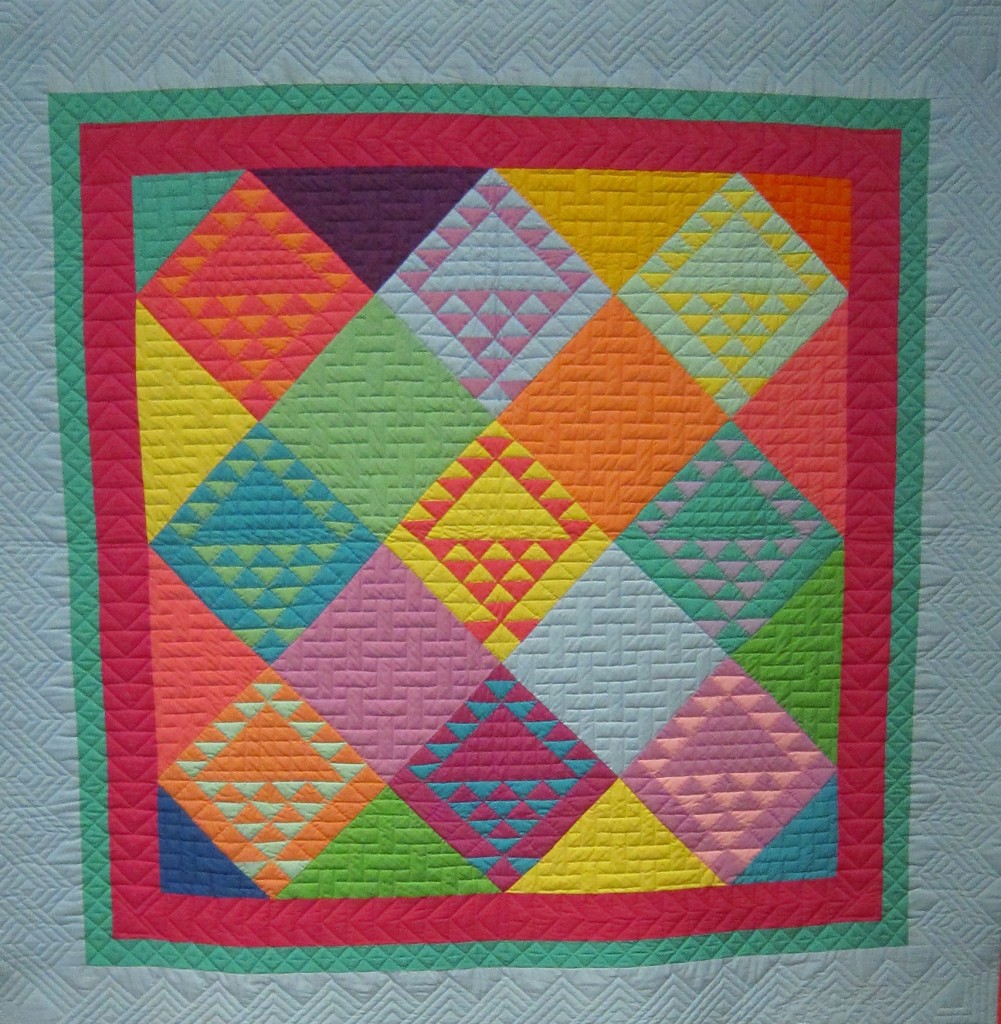
A lot of tradition in this quilt but the use of pastel colours move it out of what many see as the “traditional” rural quilt made from remnants and flour sacks.
Then along came John Willard who introduced designs that had not been seen before and quilt making was now going in a different direction. Willard has a 40 year retrospective on at the Burlington Art Centre where there is a feast for the eye and, if you look very closely, some very, very powerful statements hand stitched into a quilt.
There are a number of quilts that would meet the demanding standards of the Mennonite community and there is one that would fill the wall of one of those Lakeshore mansions.
Willard will tell you the very moment he became an artist. The family came across an old trunk stuck in a chicken coop on a family farm in Shediac, New Brunswick. It was filled with brightly coloured crepe paper – that moment James Willard could almost feel the colour entering his blood stream – we see that colour today on the walls at the Burlington Art Centre.
Willard was a set designer, a photographer He bought his first quilt in 1972; in the next five years he could display a collection of 30 quilts.
His work has meandered all over the place. He worked as a custodian at the Oakville Library and later accepted the position of Publicity and Programming Assistant which he held for 23 years.
Willard’s introduction to the finer art of actually quilting was received at the hand of Michael James who was giving workshops. Willard didn’t subscribe to the diehard traditionalists who insist quilts must be completely hand stitched from geometric blocks, have four square corners and be used as bed covering upon completion. Willard went with those who believed a quilt could be of any size, shape, texture or subject matter and could be hung on a wall to be admired as a work of art.
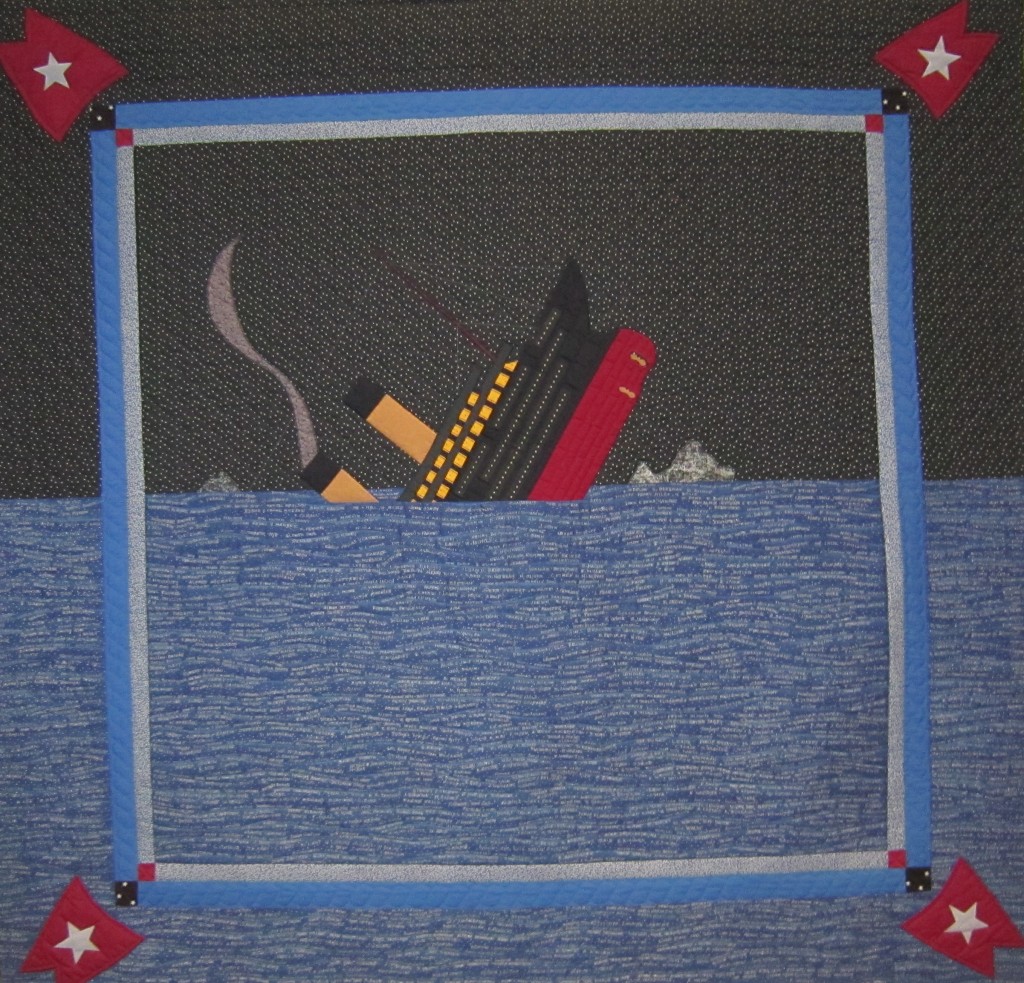
It all began on an evening in 1907 needs very close inspection. What appears to be white caps on the waves is much more than the eyes sees at first glance.
There is a quilt that didn’t do much for me when I glanced at it. It saw it as a postcard, mildly interesting, until a woman asked if I’d looked at the Titanic – I said I had but it wasn’t my kind of quilt – but that I did like the ribbon quilts. “Take a closer look” the woman said to me. I did and said – “so it’s a quilt of the Titanic sinking – there are two of them.”
With that tone of voice only a teacher or a Mother can use, the woman said: “get closer” so I walked up and took a really close look – and then it hit me. The names of the more than 1500 people whose lives were lost when the Titanic sank at sea were hand stitched into the waves the ship was sliding beneath. The quilt is called: It all began on an evening in 1907.
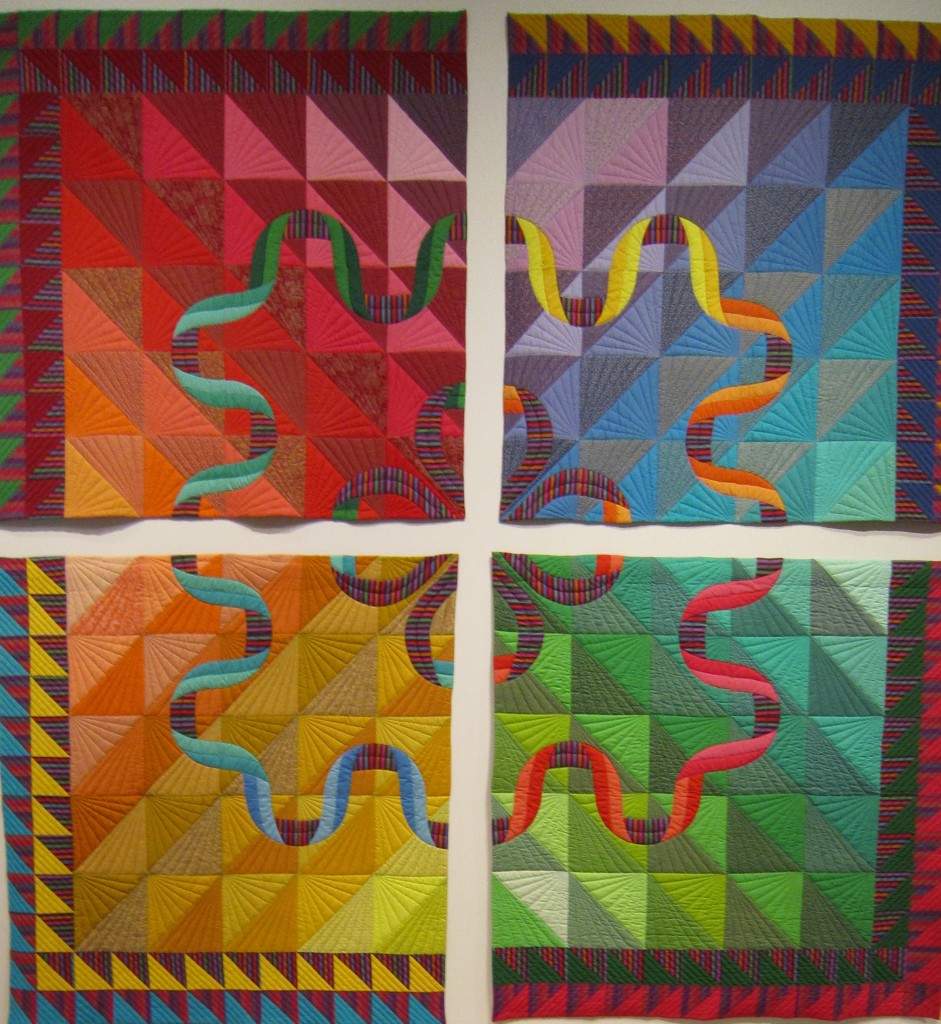
This massive piece needs a very large wall – it takes over any room it is installed in – but then what a room. The colour, the energy – it is almost a tapestry.
The Ribbon Series, of which here are seven at the exhibit, celebrate a turning point in Willard’s life when he came out of the closet and embraced his life as a gay man with a joy and celebration that is evident in the flows of the ribbons in some of the quilts and the tight design and discipline in others.
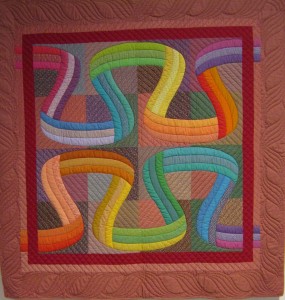
The colour, the flourish and the tight discipline take the art of quilt making some distance from the remnant quilts traditionally seen as folk art.
Willard is very much a quilter, evident when you watch the way he holds the needle and draws a thread tightly but he has always relied on fellow quilters who have worked with him following his designs and instructions. The late Alvina Martin and Linda Robertson have done much of the finishing work from designs Willard spent months perfecting.
This is an exhibit well worth the time. It is the work of a master who broke old moulds and advanced the art of quilt making to a new level.
The quilts are on display until the end of the month – well worth some of your time.














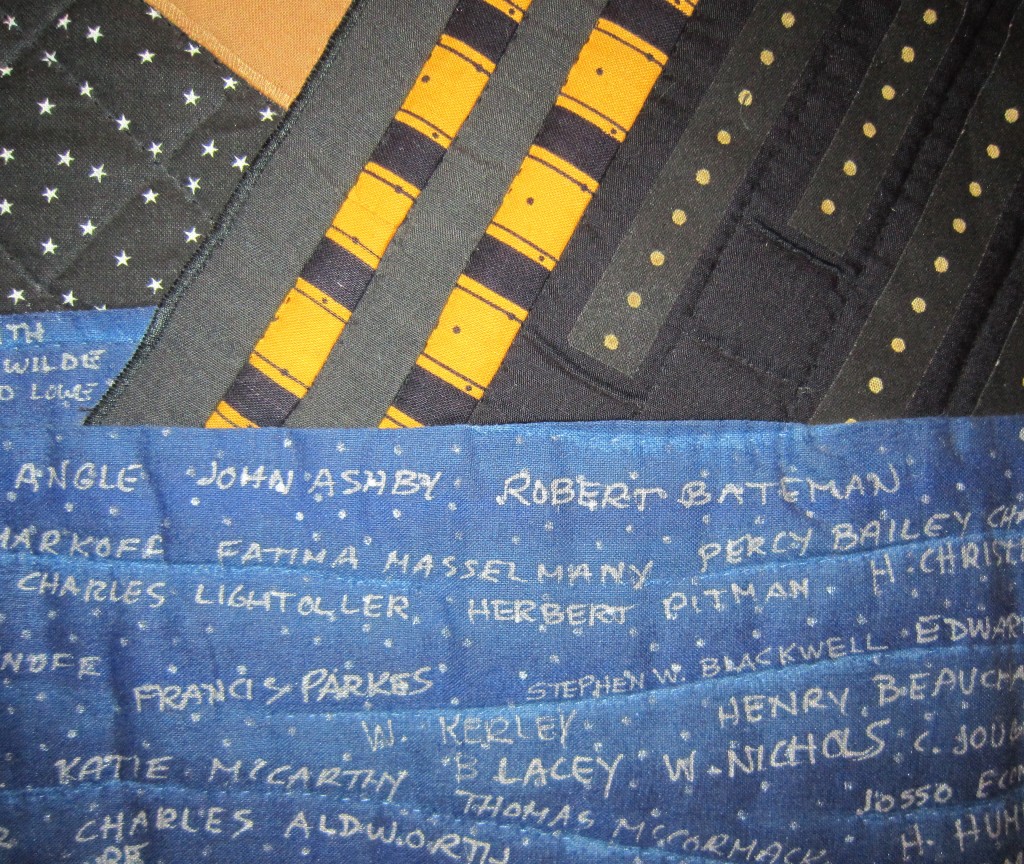






I am very pleased to be introduced to John Willard through this article. He has truly broken the old thoughts and ideas about quilts and quilting and advanced their artistic beauty. it would be an honour to meet him.